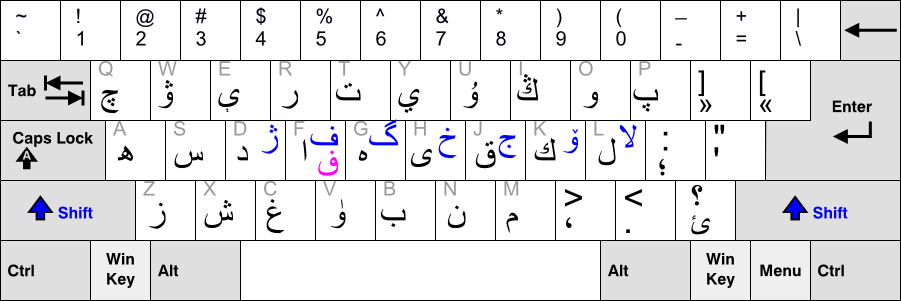Uyghur Arabic script on:
[Wikipedia]
[Google]
[Amazon]
The Uyghur Arabic alphabet ( ug, ئۇيغۇر ئەرەب يېزىقى, translit=Uyghur Ereb Yëziqi UEY) is a version of the Arabic alphabet used for writing the

Uyghur language
The Uyghur or Uighur language (; , , , or , , , , CTA: Uyğurçä; formerly known as Eastern Turki), is a Turkic language written in a Uyghur Perso-Arabic script with 8-11 million speakers, spoken primarily by the Uyghur people in the Xi ...
, primarily by Uyghurs
The Uyghurs; ; ; ; zh, s=, t=, p=Wéiwú'ěr, IPA: ( ), alternatively spelled Uighurs, Uygurs or Uigurs, are a Turkic ethnic group originating from and culturally affiliated with the general region of Central and East Asia. The Uyghur ...
living in China. It is one of several Uyghur alphabets
Uyghur is a Turkic language with a long literary tradition spoken in Xinjiang, China by the Uyghurs. Today, the Uyghur Arabic alphabet is the official writing system used for Uyghur in Xinjiang, whereas other alphabets like the Uyghur Latin an ...
and has been the official alphabet of the Uyghur language since 1982.
The first Perso-Arabic derived alphabet for Uyghur was developed in the 10th century, when Islam was introduced there. The version used for writing the Chagatai language. It became the regional literary language, now known as the Chagatai language#Alphabet, Chagatay alphabet. It was used nearly exclusively up to the early 1920s. Alternative Uyghur scripts then began emerging and collectively largely displaced Chagatai; ''Kona Yëziq'', meaning 'old script', now distinguishes it and UEY from the alternatives that are ''not'' derived from Arabic. Between 1937 and 1954, the Perso-Arabic alphabet used to write Uyghur was modified by removing redundant letters and adding markings for vowels. A Cyrillic script, Cyrillic alphabet was adopted in the 1950s and a Latin alphabet in 1958. The modern Uyghur Perso-Arabic alphabet was made official in 1978 and reinstituted by the Chinese government in 1983, with modifications for representing Uyghur vowels.
The Arabic alphabet used before the modifications (Kona Yëziq) did not represent Uyghur vowels and according to Robert Barkley Shaw, spelling was irregular and long vowel letters were frequently written for short vowels since most Turki speakers were unsure of the difference between long and short vowels. The pre-modification alphabet used Arabic diacritics (, and ) to mark short vowels.
Robert Shaw wrote that Turki writers either "inserted or omitted" the letters for the long vowels , and at their own fancy so multiple spellings of the same word could occur and the was used to represent a short a by some Turki writers.
The reformed modern Uyghur Arabic alphabet eliminated letters whose sounds were found only in Arabic and spelled Arabic and Persian loanwords such as Islamic religious words, as they were pronounced in Uyghur and not as they were originally spelled in Arabic or Persian.
Current Official Alphabet
The table below lists all 32 letters of the current official Uyghur alphabet used in Xinjiang in alphabetical order, along with their IPA transcriptions. Note: also represents /ʔ/ but it is usually ignored at the beginning of words. It still reads /ʔ/ in the middle, such as /saʔɛt/ ''hour''.Spelling of Suffixes
Uyghur spelling borrowed heavily from Chagatai influences. The spelling of the suffixes from Uyghur also matched Chagatai spellings which were kept largely static. Below is an incomplete list of suffixed spellings and their vowel harmony alternatives. Frequently, some Chagatai suffixes were separated from their root words by a zero width non-joiner while in modern Uyghur the root+suffix would be joined. Several of these alternatives were influenced by security policy, security-policy considerations of the Soviet Union or the China, People's Republic of China. (Soviet Uyghur areas experienced several non-Arabic alphabets and the former Commonwealth of Independent States, CIS countries, especially Kazakhstan, now use primarily a Cyrillic script, Cyrillic-based alphabet, called ''Uyghur Cyrillic alphabet, Uyghur Siril Yëziqi''.) A Pinyin-derived Latin-based alphabet (with additional letters borrowed from Cyrillic), then called "New script" or ''Uyghur New Script, Uyghur Yëngi Yëziq'' or ''UYY'', was for a time the only officially approved alphabet used for Uyghur in Xinjiang. It had technical shortcomings and met social resistance; Uyghur Ereb Yëziqi (UEY), an expansion of the old Chagatai alphabet based on the Arabic script, is now recognized, along with a newer Latin-based alphabet called ''Uyghur Latin alphabet, Uyghur Latin Yëziqi'' or ''ULY'', replacing the former Pinyin-derived alphabet; ''UEY'' is sometimes intended when the term "''Kona Yëziq''" is used.Historical Spellings

Old and Modern Alphabet Spelling Comparisons
References
{{DEFAULTSORT:Uyghur Arabic alphabet Arabic alphabets Uyghur language Alphabets used by Turkic languages